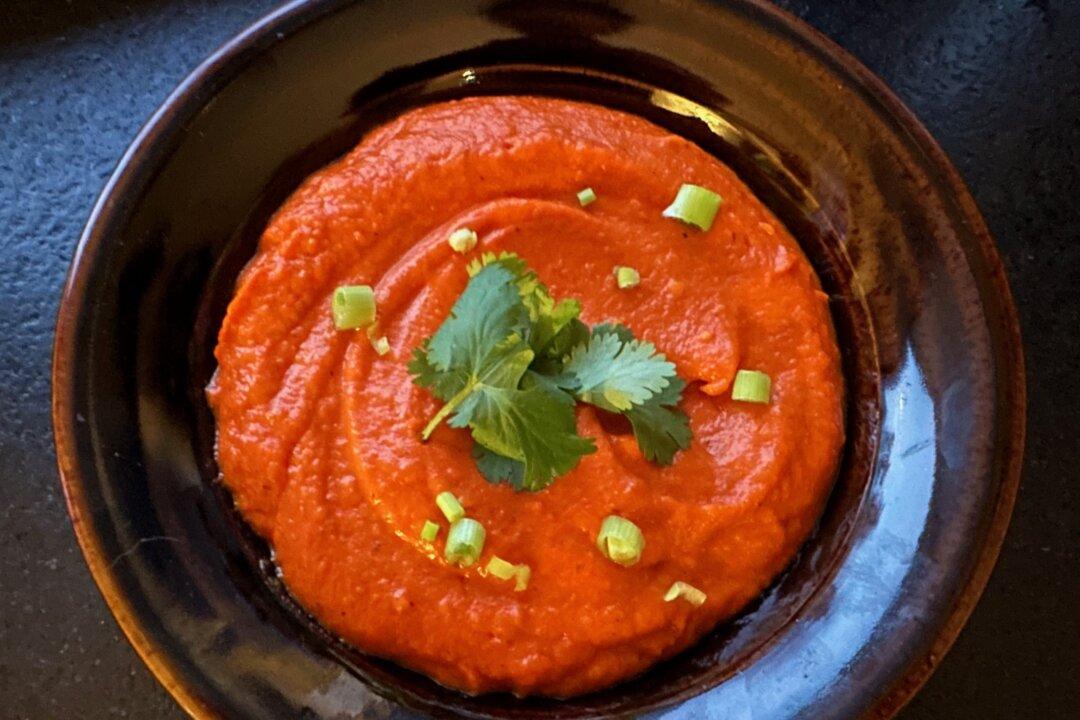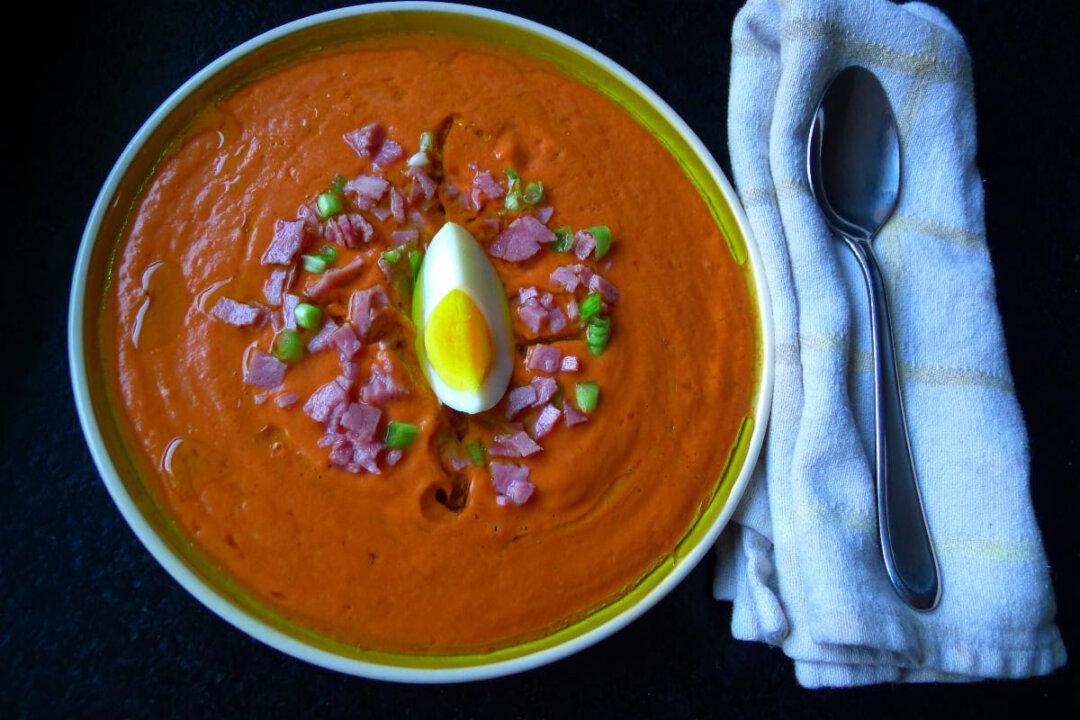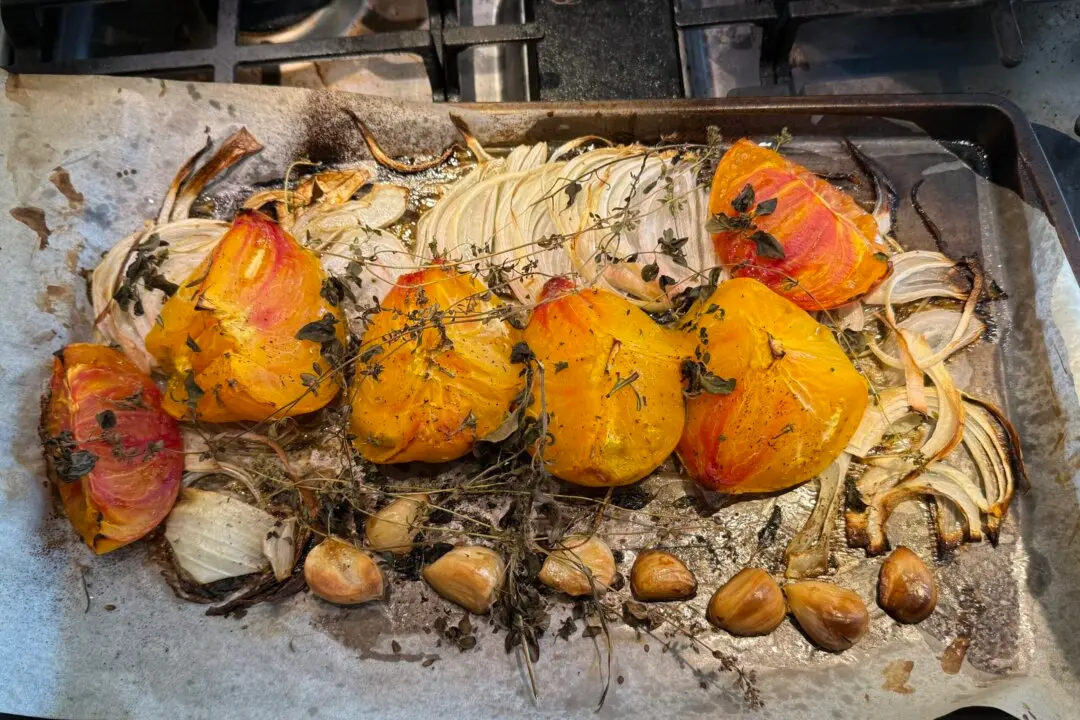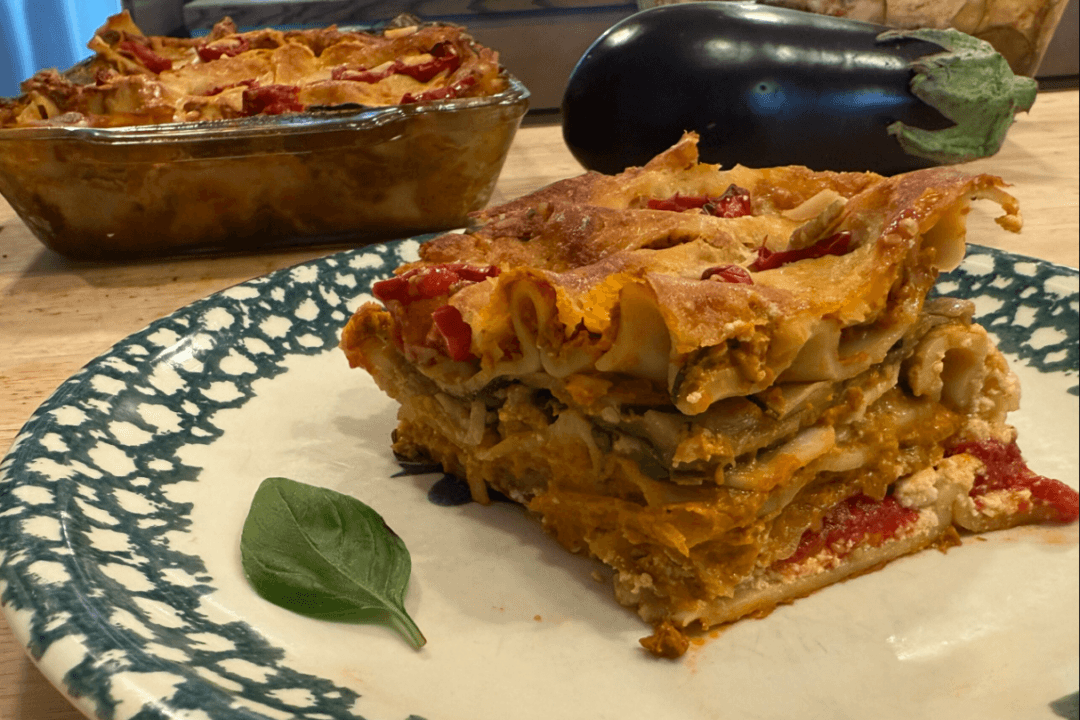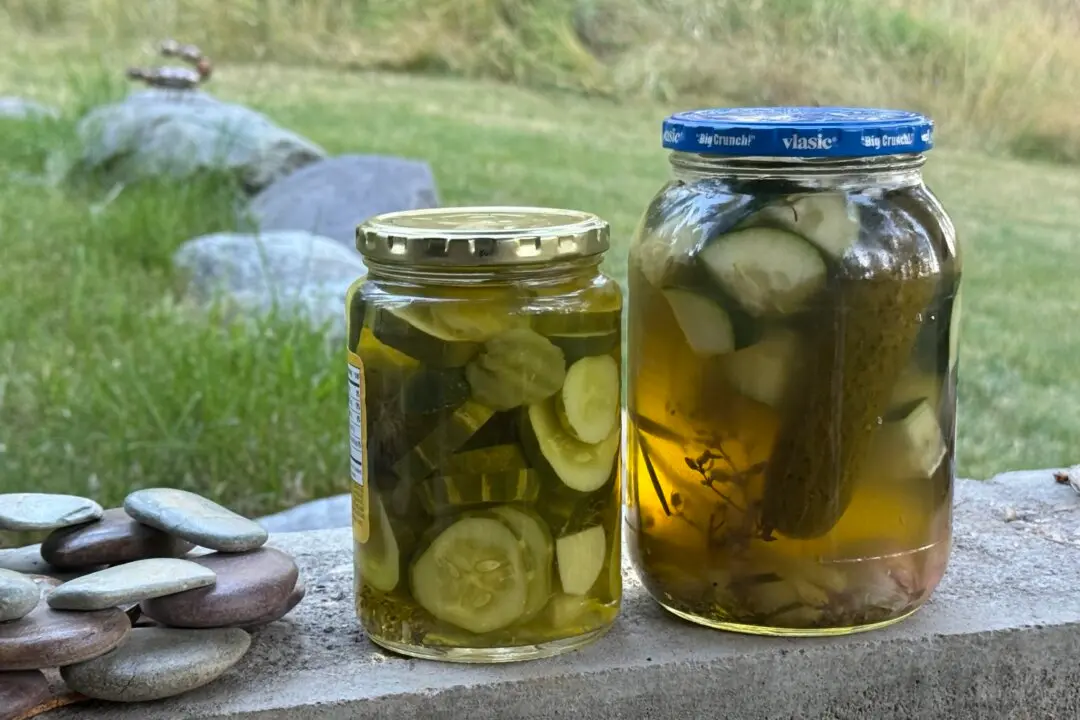A year has come and gone since I happened upon a flame-orange paste from roasted squash and red peppers. I call it magma, because it’s red and earthy, but I could also call it autumn mayonnaise because it improves everything it touches. Whatever we name it, I am still grasping the implications. It’s a dip, a spread, a sauce, a dressing, and a soup that’s as hot, cold, spicy, mild, or seasoned as you wish. Magma will always warm you up, even when served cold, because the act of making this garden magma is simply too autumnal to leave you chilled. Plus, there is an oven involved.
To create magma, you simply roast sweet red peppers, along with a starchy squash such as kabocha, and blend with olive oil, garlic, and salt. The resulting puree is thick and, after some time, will set up downright stiff thanks to the pectin in both squash and peppers. Pectin is a carbohydrate that jam makers use to thicken their product, and it makes the magma as stiff as pudding.

